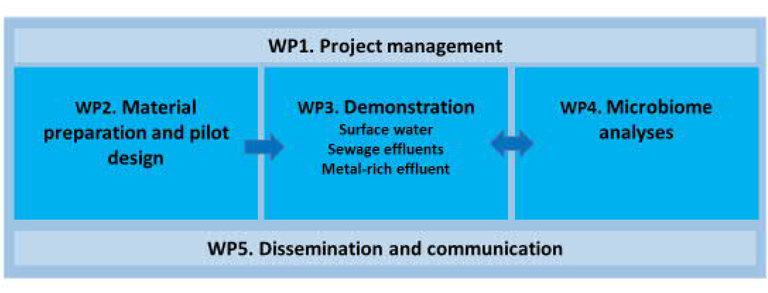REWA
Reduction and assessment of antimicrobial resistance and emerging pollutants in natural-based water treatment systems.

Partners
Partners
Galilee Research Institute (MIGAL)
University of Copenhagen (UCPH)
University of KwaZulu-Natal (UKZN)
Abstract
Abstract
The main goal of the REWA project is the strategic development and implementation of sustainable and cost-effective technologies for the removal of contaminants of emerging concern (CECs), metals, pathogens including antimicrobial-resistant bacteria and antibiotic resistance genes (ARGs) from water.
The scientific and technological aims are to demonstrate:
- new concept in surface water treatment based on state-of-the-art methods (nanocomposites
coagoflocculation and pathogens removal, photocatalysis oriented to visible light catalysts, and tailor-adapted sorbents), - sewage effluent polishing with biosorbents and carbon-based nanomaterials,
- the use of biocoagulants for metal-rich effluents.
The efficiencies of the treatment steps for removal of CECs and antibiotic resistance (ARGs, mobile genetic elements and bacteria) will be assessed. Mitigation of selection pressures for antibiotic resistance/co-selection potentials will be investigated. Special attention will be given to the raising of awareness via various channels and to the education by developing training material including an e-learning course.
WP structure
WP structure
WP number | Led by |
| WP1 | UO |
| WP2 | MIGAL |
| WP3 | UO |
| WP4 | UCPH |
| WP5 | UKZN |

Expected research results
Expected research results
- A novel concept for surface water treatment using clay-polymer nanocomposites, photocatalysis and tailored-made specific sorbents.
- Information about the effectiveness of biosorbents and carbon-based nanomaterials in removing and destroying CECs in sewage effluents.
- Comprehensive assessment of the water treatment technologies for their abilities to mitigate environmental dissemination of antibiotic resistance.
- Information about the effectiveness of tannin-based biocoagulants in enhancing metal removal from metallurgical effluent and the ability of metals to co-select antibiotic resistance in this effluent.